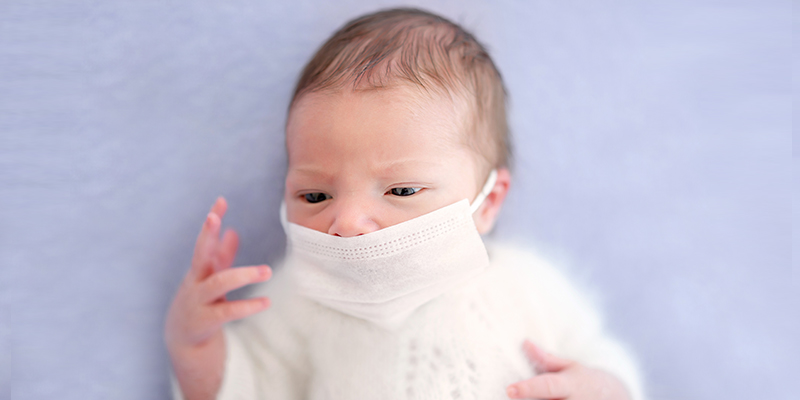The coronavirus disease 2019 (COVID-19) affects children of all ages. But most children who are infected don’t fall ill as adults, and some may not even be symptomatic. Therefore, it becomes imminent to have complete knowledge of the symptoms of COVID-19 in babies & children, along with the steps to be taken to prevent the virus and the reason behind varying presentation of COVID-19 in children.
To what extent is the possibility of a child getting ill with coronavirus disease 2019 (COVID 19)?
Given the fact that children are prone to catching the virus that causes COVID-19, it is also true that they don’t become sick as often as adults. Children also rarely experience severe illness with COVID-19. In spite of such massive outbreak of the disease around the world, the fatality rate in children is very less.
However, people of any age with certain underlying conditions, such as type 2 diabetes, are at higher risk of developing serious illness with COVID-19. Additionally, children who have congenital heart disease, genetic conditions, or conditions affecting the nervous system or metabolism are also at higher risk of serious illness with COVID-19.
Why children respond differently to COVID-19 infections?
While research is still being carried out to find the exact cause, some experts point out the fact that children often get exposed to several other coronaviruses that spread in the community to cause diseases such as a common cold. Since children, very often get cold, they might have developed antibodies against coronaviruses including SARS‑CoV-2 that protects them for some time. It may also be possible that children’s immune system might interact with the virus differently than an adult’s.
How are newborns affected by COVID-19?
Infants (children below 1year) are at higher risk of severe illness upon COVID-19 infection. This can be attributed to the immaturity of their immune systems and smaller airways, which, upon infection, are more likely to develop breathing issues.
Infants and Newborns catch the COVID-19 virus during childbirth or by coming in contact with infected caregivers. It is therefore recommended that those in the vicinity of a newborn should wear mask and wash hands before holding or coming near the baby.
COVID-19 symptoms in children & Infants
While adults and children present similar COVID-19 symptoms, children experience symptoms that are more like a common cold. Their symptoms can include:
- Fever
- Runny nose
- Cough
- Fatigue
- Muscle aches
- Vomiting
- Diarrhea
Preventing COVID-19 infections in children
Several preventive measures have been recommended to prevent newborns from catching the virus. The CDC and the WHO recommends for a family in which a baby is born to follow the below-mentioned guidelines:
Regular cleaning of hands: In homes where babies are born, or infants are present in the family, regular cleaning of hands with soap and water, for at least 20seconds, must be practiced. Under the non-availability of soap and water, use alcohol-based hand sanitizers
Practice social distancing: Try to keep children at home rather than going out in the park, garden, etc. If possible, try to avoid in-person playdates and avoid games that involve shared equipment or toys.
Clean & disinfect your home: Thoroughly clean surfaces that are frequently touched such as doorknobs, chair handles, switches, remotes, desks, toilets, and sink. Also, clean areas that frequently get dirty such as baby’s changing table, and surfaces that the child often touches, such as his or her bed frame, craft table, toy chest, and toys.
Use face masks: Wearing cloth face coverings in public places is one of the most effective ways to curb the spread of the virus. Also, it is one of the best ways to avoid close contact with others in public places with ongoing community spread. However, masking for children above two years is only advised. Additionally, children with breathing issues should not be made to wear masks.
Further to this, to prevent SARS-CoV-2 infections in children, it is vital for them to have received all their vaccinations. This is extremely important for children under the age of 2.

